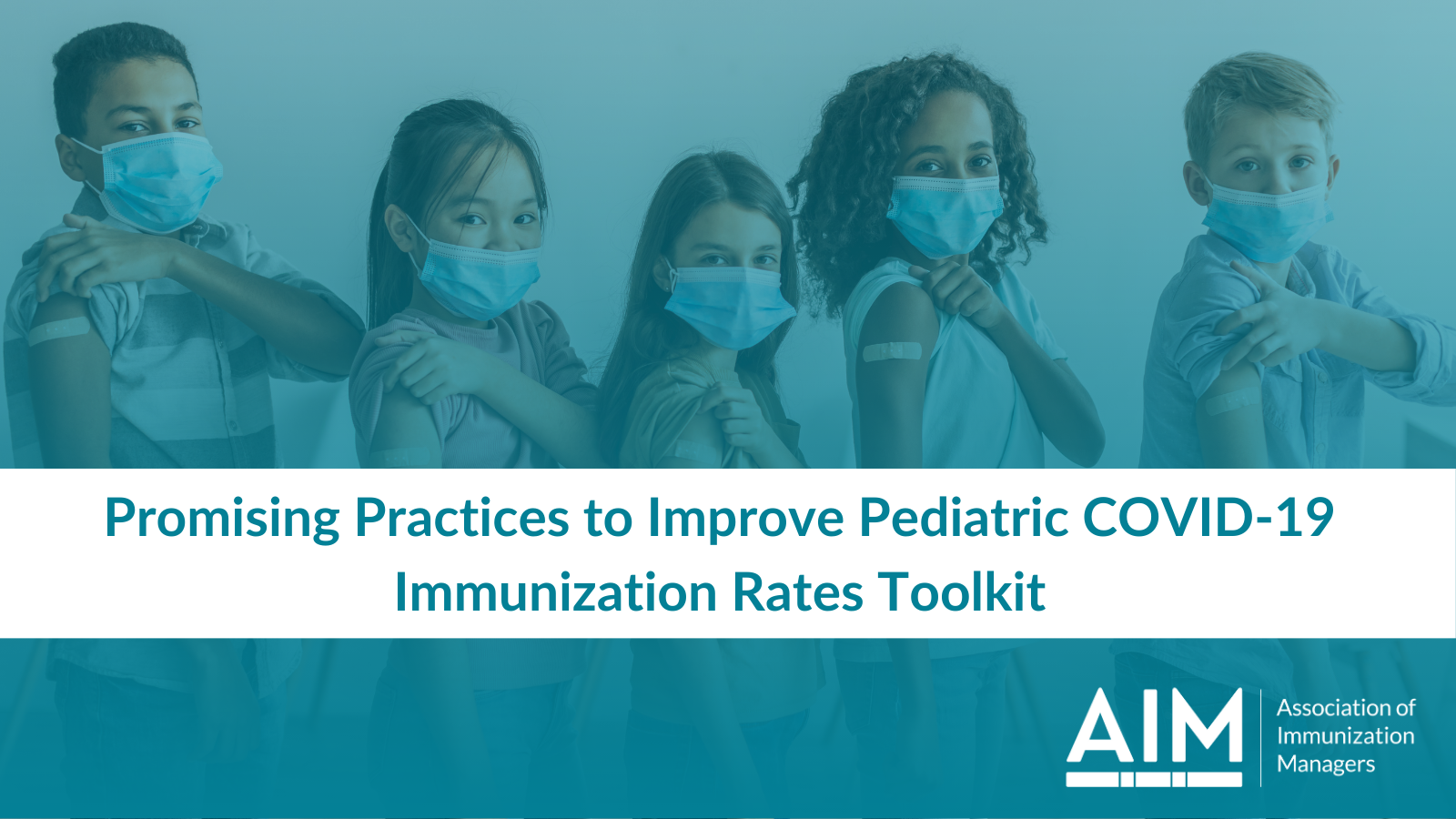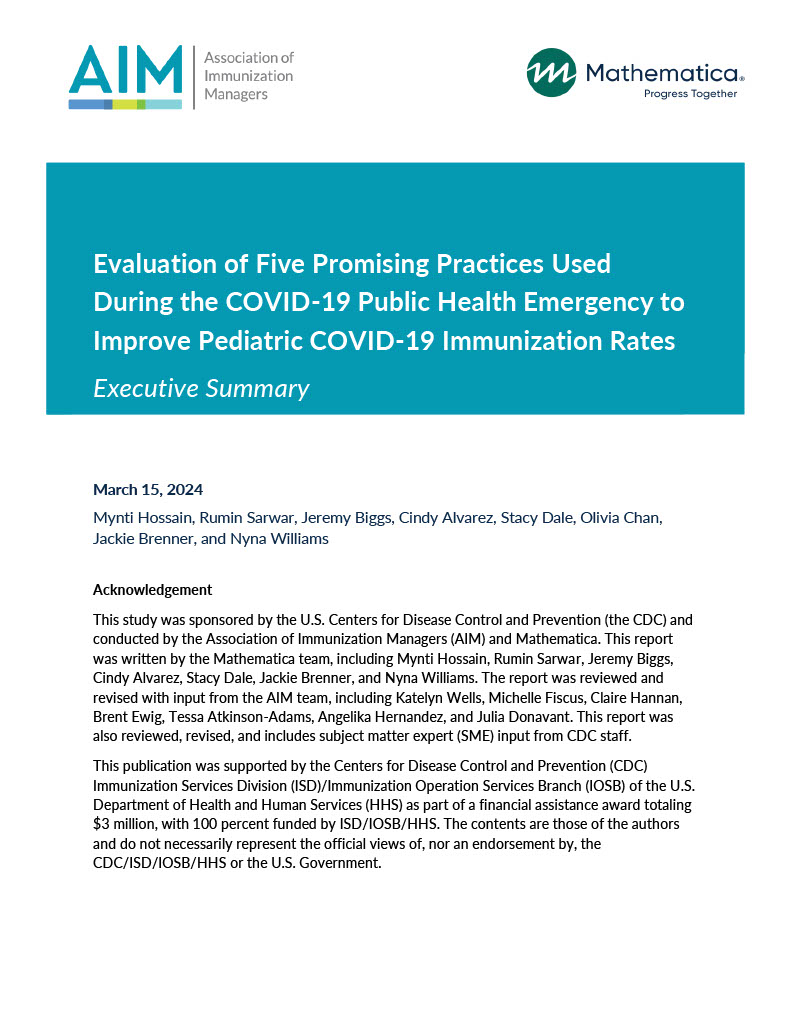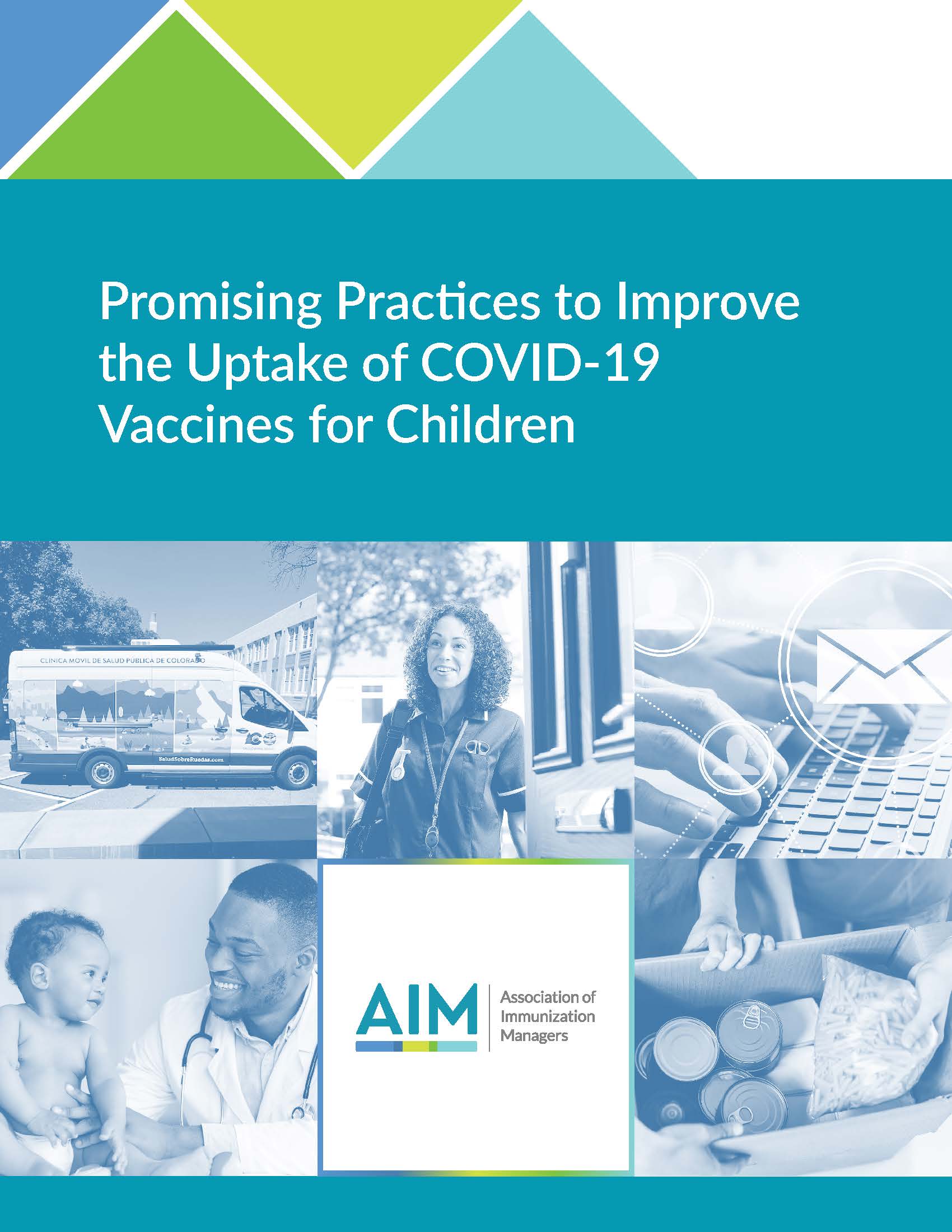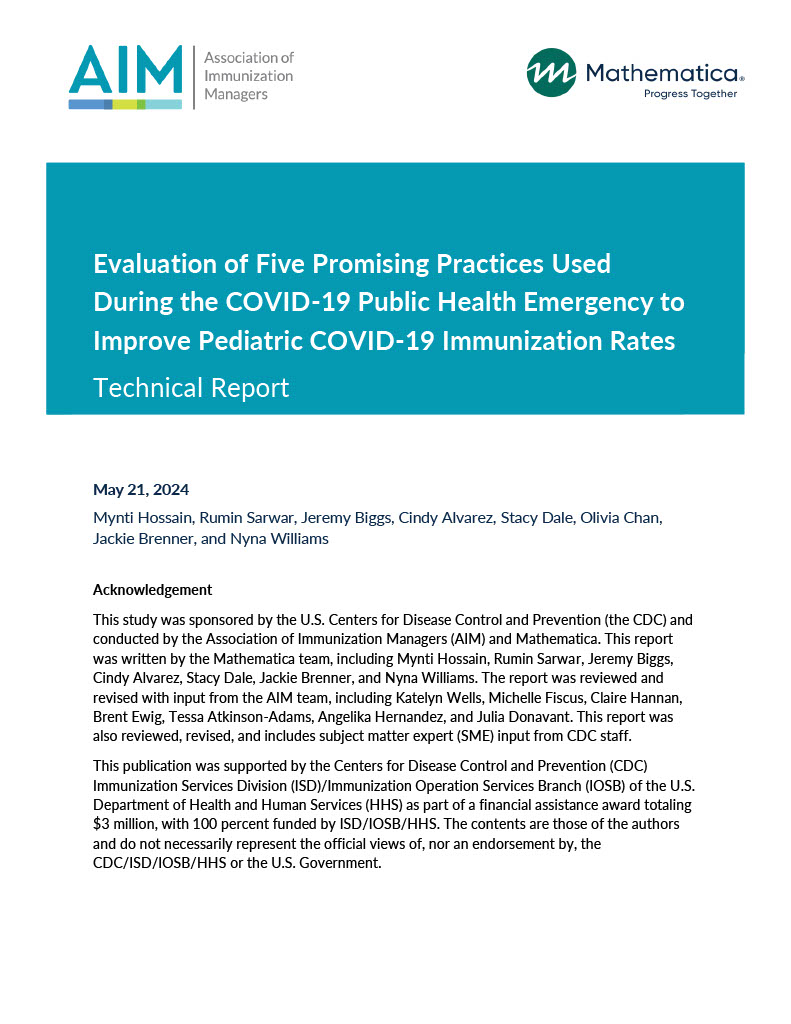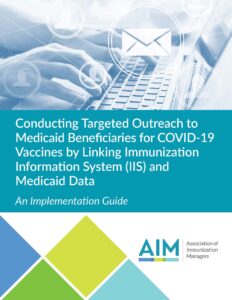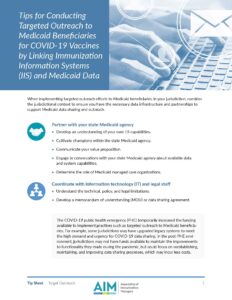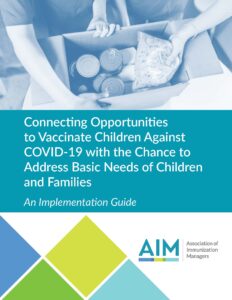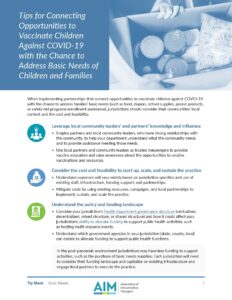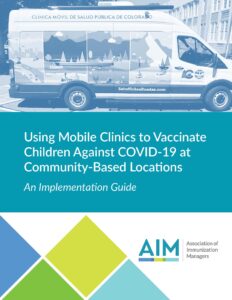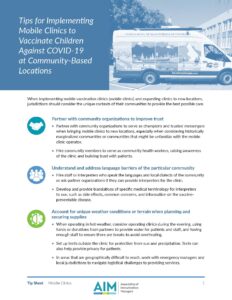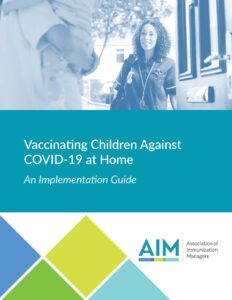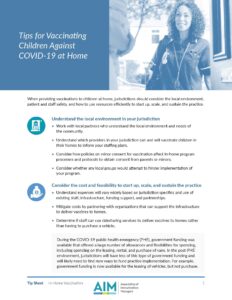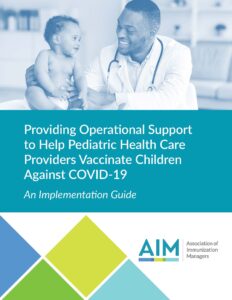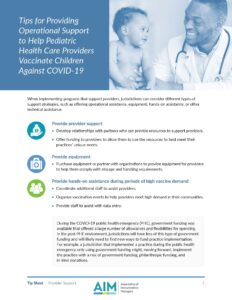AIM hosted the Five Practices for Increasing COVID-19 Pediatric Vaccine Coverage Rates: Translating Lessons Learned During the Pandemic to the Current Environment webinar on August 9. During this webinar, attendees heard from Katelyn Wells, Ph.D., AIM’s chief research, evaluation, and development officer, Michelle Fiscus, MD, FAAP, AIM’s chief medical officer, and Emily Messerli, DNP, APRN, FNP-C, AIM’s chief programmatic officer, about five promising practices immunization programs used during the public health emergency and how these practices may be adapted for use during post-COVID-19 vaccine commercialization.
Webinar Resources
- Webinar slides
- Program Practice Database
- Technical Report
- Basic Needs Practice Resources
- Partnering with Diaper Banks to Increase Childhood Vaccination Rates and Improve Access Q&A
- A Multiresource Event Model Developed to Increase Access to COVID-19 Vaccines in Pima County, Arizona, Summer 2021
- Targeted Outreach Practice Resources
- Communicating the Value of Immunization Information Systems (IIS): A Toolkit for Program Managers
- Improving COVID-19 Vaccination: A Compilation of Resources: Example Resource from California
- Mobile Clinics Practice Resources
- At Home Practice Resources

